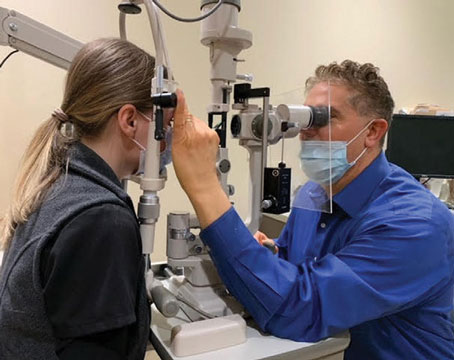In this month’s cover story, physicians and practice management experts share creative ways that ophthalmologists can tackle the growing disparity between the number of patients who need care and the number of physicians available to provide it. They look at it from numerous angles, from the increased use of physician-extenders to ways to expand the number of ophthalmologists. One of the issues they wrestle with is the increase in part-time physicians, and one physician made an interesting assertion: It actually might be unethical for an ophthalmologist to go part time within five years after completing residency without a good reason. The idea is that the country, specifically the taxpayers, funded his or her education with the understanding that the physician would eventually use all this knowledge and skill to serve the community.
This was a striking assertion, and one I’d never thought of—or heard anyone posit—before. Like the servant in the parable who buries the gold his employer gave him rather than use it, multiply it and benefit from it as his fellow servants did with theirs, are part-time physicians wasting their largesse of talent? As with many of life’s complex questions, I’m not sure there’s an easy answer.
Indeed, the phenomenon of part-time physicians appears to be on the rise. In a 2018 survey, around 10 percent of physicians worked 30 hours or less per week, which was a 16-percent increase from 2012.1 An older survey of a different group pegged the number of part-time physicians as high as 21 percent.2
Cutting back on your availability as a physician definitely makes it tougher to treat the growing number of patients.
However, on the other side of the argument, physician burnout is real: In the 2022 Medscape Physician Burnout and Depression Survey, 47 percent of respondents reported being burned out.3 A lot of this comes from the increasing amount of time spent away from patient care, grinding through charting and billing, and managing general bureaucratic red tape that saps one’s enthusiasm for the work.
The onus on reducing this burnout shouldn’t be placed entirely on physicians. CMS and insurers could help ensure more engaged, full-time doctors by easing the endless reimbursement cuts that put financial stress on practices, and by not attempting to enforce onerous dictates such as pre-authorization for cataract surgery. Also, as a physician opined in the Medscape survey, health-care organizations can do more to help doctors on the edge. “A call-in counseling service isn’t enough,” he wrote. “After all, we are the breadwinners for them.”
Ophthalmologists are extremely talented people whose patients will need them more than ever in the coming years. Let’s hope the organizations that work with them can provide the support they need to answer the call.
— Walter Bethke
Editor in Chief
1. The Physicians Foundation. 2018 survey of America’s physicians. https://physiciansfoundation.org/wp-content/uploads/2018/09/physicians-survey-results-final-2018.pdf. Accessed August 30, 2022.
2. New England Journal of Medicine Career Center. Part time physician practice on the rise. https://resources.nejmcareercenter.org/article/part-time-physician-practice-on-the-rise/. Accessed August 30, 2022.
3. Kane L. Physician Burnout & Depression Report 2022. https://www.medscape.com/slideshow/2022-lifestyle-burnout-6014664. Accessed August 30, 2022.





